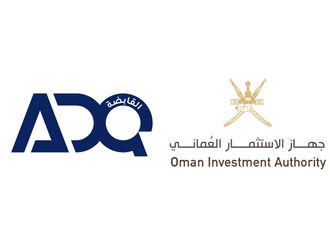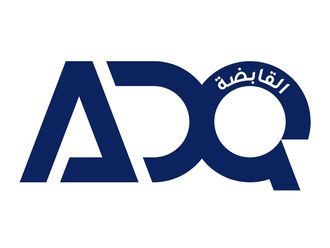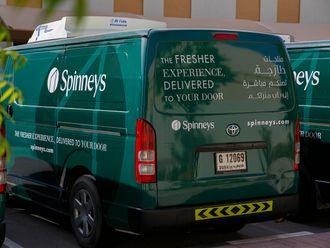Dubai: Saudi Basic Industries Corp.’s bond yield dropped to a record as a scarcity of dollar-denominated securities in Saudi Arabia draws investors seeking exposure to the country with the Middle East’s lowest credit risk.
The yield on the world’s biggest publicly traded chemicals maker’s 3 per cent securities due November 2015 is down 30 basis points since hitting a four-month high on August 21. It reached a record 1.988 per cent on September 21. It was little changed today. The yield on investment-grade Middle East debt has fallen 19 basis points in the period to 3.36 per cent, HSBC/Nasdaq Dubai’s Middle East Investment Grade U.S. Dollar Sukuk/Bond Index shows.
Two Saudi issuers, including Saudi Electricity Co., sold $2.5 billion of dollar bonds this year, compared with $9.6 billion raised from 14 sales in the UAE, a fellow member in the Gulf Cooperation Council, data compiled by Bloomberg show. Sabic, whose shares are underperforming the Saudi index, benefits from this dearth in dollar notes even as revenue is hurt by declining global chemical product prices.
“There is no real dollar debt issuance out of Saudi,” Abdul Kadir Hussain, chief executive officer at Mashreq Capital DIFC Ltd., said by phone on September 19. “If you want exposure to Saudi Arabia there aren’t very many securities you can buy, except Sabic and Saudi Electricity.”
Expansion projects
The kingdom’s five-year credit default swaps, which pay the buyer face value if the borrower defaults, fell 38 basis points this quarter to 88 on September 21, taking them below higher-rated Qatar and Abu Dhabi, and just below Japan, according to CMA, which is owned by McGraw-Hill Cos. and compiles prices quoted by dealers in the privately negotiated market.
The world’s biggest oil exporter is implementing a $514 billion (Dh1.89 trillion) plan to build homes, industrial cities and airports, spending that’s helping drive economic growth of 5.1 pe rcent this year, the second-fastest pace in seven years, according to the median forecast of 17 economists compiled by Bloomberg this month. Growth in the Group of 10 industrialised nations will slow to 1.3 per cent, the forecasts show.
Expansion projects are spurring the highest loan growth in more than three years and record bond sales, with issuers from the largest Arab economy selling $8 billion of debt so far in 2012, more than any Arab country. Most of the securities were sold in riyals. ‘Can’t find enough’ Financing demands have lifted the three-month Saudi interbank offered rate, known as Saibor and the benchmark used by banks to price some loans, to 0.95437 per cent on Monday, near its highest since April 2009, data compiled by Bloomberg show. Saibor’s spread over the equivalent US rate has tripled this year to 59 basis points. The yield on one-year Saudi treasury bills is up nine basis points in 2012 to 0.59467 percent, the highest since May 2011, at last week’s auction, the data show. The yield was unchanged at today’s sale. Saudi Arabia holds weekly bill sales on Mondays.
Sabic’s bonds, rated A1 at Moody’s Investors Service, the fifth-highest investment grade, have returned 4.8 percent this year. That compares with a 4.3 percent return for the 5.9 per cent notes due February 2015 of Dow Chemical Co., the world’s third-biggest chemicals company by market value.
Sabic is “one of the most solid credits in the Saudi corporate space,” Chavan Bhogaita, the head of markets strategy group at National Bank of Abu Dhabi PJSC, said by phone on September 19. “It’s a credit that both regional and international investors really like and hence many investors want to get hold of that paper but can’t find enough of it.” Chemical prices Still, Riyadh-based Sabic has suffered from a downturn in petrochemical prices due to slower global economic growth, Sabic said in July. Second-quarter profit fell 35 per cent, missing analysts’ estimates, and shares of the biggest Saudi company by market value are down 7 per cent this year, compared with a 7.9 per cent advance for the benchmark Tadawul All Share Index.
Average petrochemical product prices will decline another 3 percent to 5 per cent due to “weaker demand from China, uncertainty in Europe and increasing supply from various new sources,” Hettish Karmani, an analyst at Global Investment House KSCC, said by phone from Kuwait on September 20. “In the third quarter, profit will be relatively low from the previous year and we aren’t very optimistic that petrochemical prices will increase in the fourth quarter or the next year.”
‘Very sought after’
Karmani maintains a buy rating on the shares along with 15 other analysts, according to data compiled by Bloomberg. One analyst recommends investors hold the stock.
The lack of dollar debt issues may buttress the bonds. Saudi Electricity and Banque Saudi Fransi, the lender part-owned by Credit Agricole SA, raised $1.75 billion and $750 million, respectively, from bond sales this year, representing less than a third of total sales by Saudi entities.
Saudi Arabia “remains a riyal story by and large,” Georges Elhedery, the Dubai-based head of global markets for the Middle East and North Africa at HSBC Holdings Plc, the biggest manager of GCC bond sales this year, said Sept. 11.
“Sabic is a very sought-after credit from the Saudi market, and the scarcity of dollar-denominated paper from blue chip Saudi credits in general” is contributing to “yield compression,” Bhogaita at NBAD said.












